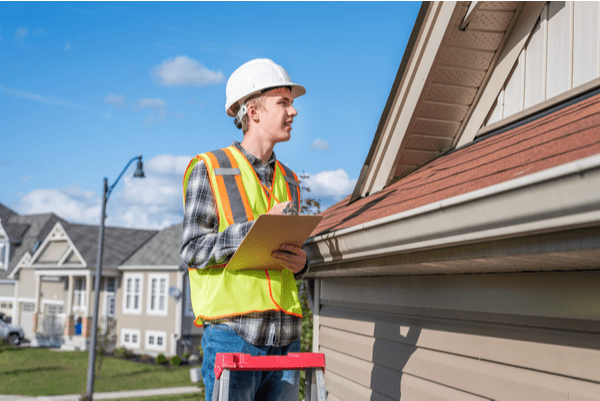How to inspect your gutters
Gutters are installed along a roof’s edge to capture and direct runoff from rainfall and other inclement conditions. A clogged or damaged gutter system will fail to channel this drainage away from the home efficiently and can lead to spilling, pooling, leakage, and possible foundation damage. It is recommended that you have your home’s gutters inspected at least two times a year. You may need to have your gutters checked more frequently if you suspect any damage or you live in a densely forested area. In order to properly examine your gutters make sure to follow all the steps outlined in this plan.
Disclaimer: We don’t recommend inspecting your own gutters as ladders can be dangerous if not used properly. Even so, a fall from a significant height could be very harmful. Be sure to have a bonded, insured professional inspect and clean your gutters regularly.
Remove all the debris from the gutters
The first step to a full gutter inspection is to remove all the leaves, needles and other debris from the gutters. You will either need to use a ladder to reach your gutters or one of the numerous ladder-free gutter cleaning tools available. If you choose to use a ladder, always use good ladder safety by enlisting a spotter and making sure that the ladder is firmly planted on even ground. Once the gutters have been cleared of large debris, you will need to remove all the small debris, dust and mud from the gutters using a hose or a hose attachment. As the water runs through the gutter system, make sure to look out for leaks on the underside of the gutter and that the water flows easily through every part of the system including the downspout.
Check for leaks or slow spots
Make sure that water is flowing freely through the downspout as well as through any pipes the downspout may connect to, including underground pipes. If underground pipes are clogged you may need to use a plumber’s snake or other implements to insure maximum drainage. If there are any areas where the water slows significantly or pools, you may have a slope issue. Spikes or hangers may need to be adjusted or relocated up or down to improve the slope and create better flow in your gutters.
Examine materials around the gutters
Check the space between the gutter and the wall, especially if you have noticed water running down the side of the wall during storms or if there are any visible stains on the side of your house. You will want to closely examine the spikes or hangars that hold the gutters to your roof as those can become loose and may need to be resecured or even replaced. Make sure to inspect all the seams, ends or any other part where sealant may be missing or where you may find leaks. Repair by removing old sealant and applying new material.
Make sure your home is protected
You may find this potentially dangerous process to be too involved or overwhelming. If this is the case, don’t hesitate to call Ned Stevens Gutter Cleaners. Our team of professionals will inspect your gutters making sure they run smoothly, cleanly and without any leaks. We will ensure that your home is as protected as possible. Call us today to get $25 off your first gutter cleaning!



